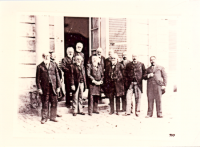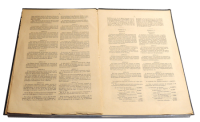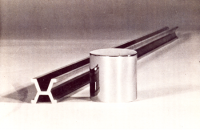
THE METER CONVENTION
 In the second half of the 19th century, several countries, including Portugal, had adopted the metric system and were trying to promote its widespread use, replacing the old systems of weights and measures.
In the second half of the 19th century, several countries, including Portugal, had adopted the metric system and were trying to promote its widespread use, replacing the old systems of weights and measures.
On the occasion of the Universal Exhibition in Paris, in 1867, a large number of scientists formed a “Committee on Weights and Measures and Currency” that aimed to standardize measures. In 1869, the French government invited numerous countries to be represented in Paris in an “International Metro Commission”.
 Finally, on May 20, 1875, representatives from 17 countries signed the Metro Convention in Paris.
Finally, on May 20, 1875, representatives from 17 countries signed the Metro Convention in Paris.
The Convention created several bodies responsible for metrology management at the international level:
- BIPM – Bureau International des Poids et Mesures, with the aim of establishing new metric standards, preserving international prototypes and conducting the necessary comparisons to ensure uniformity of measurements from all over the world;
- CGPM – General Conference on Weights and Measures, which meets every 4 years;
- CIPM – International Committee of Weights and Measures, made up of 14 personalities on an individual basis (in 1921 they became 18).
Portugal was one of the countries that participated in the Metro Convention, having been represented by José da Silva Mendes Leal, a pair of the kingdom and plenipotentiary minister in Paris.
Portugal was represented in the first 3 CGPM meetings by Count Henrique. de Macedo, plenipotentiary minister in Madrid.
 At the first CGPM, which took place in 1889, the new metro and kilogram prototypes were approved and copies that would be distributed by member countries were randomly selected, with Portugal keeping copies no. 10, both of the metro and the kilogram.
At the first CGPM, which took place in 1889, the new metro and kilogram prototypes were approved and copies that would be distributed by member countries were randomly selected, with Portugal keeping copies no. 10, both of the metro and the kilogram.